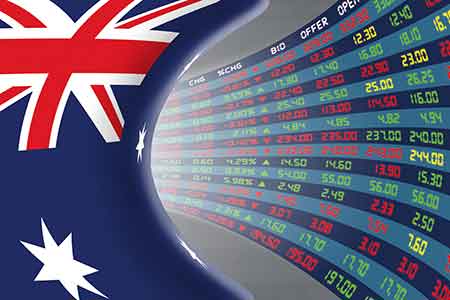Stock Market Rises as Speculators Get it Wrong

By Dale Gillham
The Federal election result has seen the share price of the big banks and private health insurers surge. Prior to the election, speculation was ripe with fears that the market would crash with a Labour win. The big end of town were betting that the Australian stock market would fall as the election was seen as a guaranteed win for Labour, with short selling well underway last week.
Following the surprise outcome of the election the market rose over 2 per cent last Monday, as short-sellers scrambled to cover positions, with banks some of the big winners. Financials rose 6.57 per cent last week led by Westpac up over 13 per cent since last Friday’s close. ANZ and NAB were up over 8 per cent last week following its poor performance the week prior after going ex-dividend.
So does the government of the day really make a difference?
Since 1990, the Australian stock market has averaged 10.3 per cent growth per annum. During the years the country was governed by a Labour government the market rose on average around 4.4 per cent per annum, while under a Liberal government it rose 7.6 per cent per annum.
Interestingly, there is a correlation that when a Labour Government gets elected the market has a significant fall. This occurred on multiple occasions including 1974-75 with the Whitlam Government, Hawke with the ’87 crash, and more recently in 2008 with the GFC following the appointment of the Rudd Government. That said, the high prior to the GFC occurred just before the Federal election, so technically the GFC was already under way when the Rudd government took power.
So while this is an interesting correlation, it also implies that under a Liberal government the market can become over stimulated and, as a result, the stock market can become over-priced, which ultimately leads to these downfalls.
That said, we need to be aware that it is not just one factor that contributes to the stock market’s performance, as there is a range of things to consider both domestically and internationally. Elections are decided on the social mood at the time and stock markets are a barometer of social mood. Therefore, it is not surprising to see some correlation between the stock market and the government of the day.
As I have mentioned previously, regardless of the outcome of the election, the Australian stock market is bullish and it will continue to be so for the remainder of this year. So while there may be a correlation between the market and the government of the day, it is not absolute but rather just one factor to be considered. In other words, just because the Australian stock market has done well historically under a Liberal Government does not mean this will always be the case.
Currently we are experiencing flat wages growth, a slowing economy, falling housing prices and two potential interest rate cuts by the RBA. Given this, by no means is everything going to be smooth sailing under a coalition government, nor does it mean the market will rise strongly like it did prior to the GFC. As always, only time will tell.
What has been the major moves in the stock market?

In the top 200 stocks, private health insurer NIB Holdings (NHF) is up around 14 per cent, while GWA Group (GWA) is up around 15 per cent. Lynas was the top performer last week up over 22 per cent after presenting its 2025 growth plans.
The worst performers last week include Technology One (TNE), as investors were concerned about their expectations and slowing growth after releasing its half-year results. ALS Ltd (ALQ) shareholders had similar concerns despite the company beating expectations, with its share price down around 11.5 per cent. TNE shares were also heavily sold off with the share price down over 20 per cent for the week, while Fortescue Metals Group (FMG) turned from being the stellar performer over the past few weeks to being down over 8 per cent after going ex-dividend.
Looking at the sectors, the Financial sector was the best performer last week up over 6.5 per cent while Consumer Discretionary was up 2.9 per cent and Communications up around 1.3 per cent. The Information Technology sector was the worst performer down 3.3 per cent followed by Energy down 1.25 per cent and Utilities down 1.15 per cent.
What do we expect in the market?
Right now the sun is shining on the Australian stock market and I expect the all-time high will be challenged and possibly broken very soon. That said, I do expect the market to move into another low sometime early to mid-July. Given this, I expect the market will rise for a further two to four weeks before turning to move down into the low in July. For now just enjoy the ride.
So let’s get into this week’s stocks of interest. Watch the video to find out more.
Good luck and good trading!
Dale Gillham is Chief Analyst at Wealth Within and international bestselling author of How to Beat the Managed Funds by 20%. He is also author of the award winning book Accelerate Your Wealth—It’s Your Money, Your Choice, which is available in all good book stores and online.






